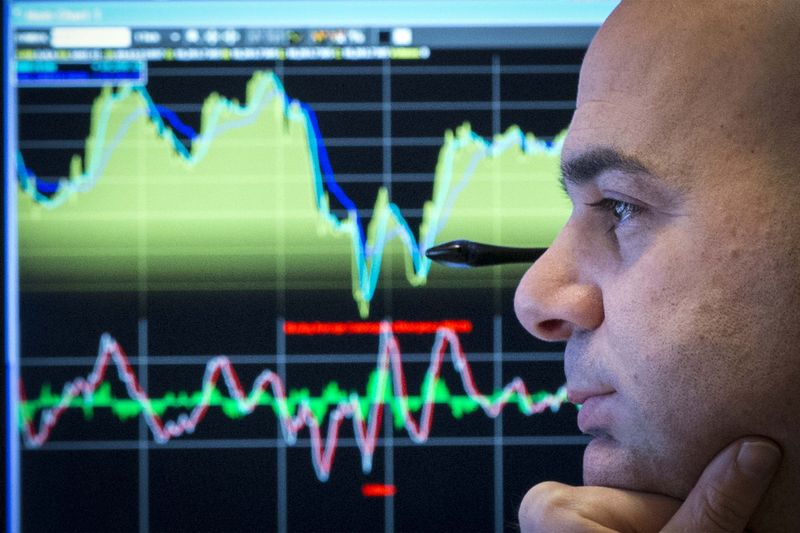Tonix Pharmaceuticals stock halted ahead of FDA approval news
By Laura Sánchez
Investing.com - European markets are volatile on Wednesday - IBEX 35, CAC 40, DAX... - after a session of falls yesterday on Wall Street in the face of different pessimistic forecasts for 2023.
The effects of tighter monetary policy, high inflation, and slowing growth will last until 2023, according to experts. However, once real interest rates peak, the economic cycle will turn, creating opportunities to increase portfolio allocations to risky assets.
In the current uncertain situation, Stéphane Monier, CIO of Lombard Odier Private Bank, discusses 10 recommendations for investing in 2023 to achieve maximum returns:
1. A pivot year: look for the inflection point
The tightening of monetary policy in the Western world, amid a global slowdown in economic activity, translates into an unfavorable configuration for risk assets. Recession and further cuts in corporate earnings expectations are the main downside risks for both equities and bonds.
Peak real rates should provide a turning point in the markets. To do so, the Fed will have to interrupt its rate hike cycle as inflation slows and unemployment rises. "As this inflection point approaches, we will gradually increase risk levels in portfolios by adding more duration in government bonds and gold, as well as some equities and credits," says Monier.
2. Underweight risk assets for now
Macroeconomic conditions warrant cautious exposure to risky assets, focusing instead on assets that can better withstand the impact of weaker growth or higher rates. Specifically, this means holding quality equities, government bonds, and investment-grade credit. It also means overweighting cash positions in order to be able to invest as soon as we see opportunities.
3. Going for quality and diversification
In the coming months, we are likely to see new lows in equity markets as high borrowing costs limit the expansion of company multiples and earnings estimates continue to adjust to recessions. Against this backdrop, quality companies with low earnings volatility and a greater ability to defend their margins are good choices.
These stocks tend to outperform in recessions or when earnings decline. In terms of quality sectors, healthcare is notable, as it enjoys high margins and some insulation from inflation, due to its high pricing power and attractive shareholder returns. It is also important to note that its valuations remain undemanding compared to other defensive growth sectors.
4. Asymmetric return profiles
Options strategies, such as put spreads over equity indices, can protect portfolios from declines in the coming months. For this reason, "at Lombard Odier, we have hedged portfolios throughout 2022 and will continue to manage them tactically depending on market conditions," says Monier.
5. Seek diversification through alternatives
Given that market conditions will remain relatively challenging, it is advisable to favor resilient hedge fund strategies such as global macro, discretionary, and quantitative. These should provide diversification, as they tend to benefit from performance dispersion across asset classes and regions. Their typically convex profiles, designed to perform over more extreme periods, should benefit from the volatile environment with limited correlation to underlying markets. Some relative value strategies should also offer attractive returns once rates stabilize.
6. Dollar strength will continue
The strength of the dollar should continue in the coming months, supported by rate differentials, liquidity tightening, and US trade issues. Other currencies supported in this context are the Swiss franc and potentially the Japanese yen. Euro and pound sterling should lag as they suffer from more structural issues related to the energy shock. The Chinese yuan should also underperform as the country's strong balance of payments begins to weaken.
7. Increased attractiveness of gold
For much of 2022, gold prices were caught between support from geopolitical and recession risks, and downward pressures from real rates and the strong dollar. For Monier, "with lower rates, a weaker dollar and a re-opening China, gold prices should rise. In October, we sold short positions on gold as a potential means of bringing our position back to neutral."
8. High-yield credit increasingly attractive
As investor sentiment improves, appetite for risky assets will increase. Once high-yield credit spreads better reflect the price of a recession and rates have stabilized, carry in this segment will become more attractive than investment grade and sovereign bonds.
9. Equities as a buying opportunity
As inflation and the threat of higher rates begin to fade, equity valuations and multiples will benefit. Easing financial conditions will cause investor sentiment to improve and, in turn, price-to-earnings ratios to widen. By mid-2023, earnings and sales expectations will be revised downward, and markets will begin to look ahead to 2024 and the recovery from the cyclical slowdown. This will offer opportunities to add exposure to cyclical and growth names.
10. Emerging market equities and local currency bonds
When the Fed breaks its interest rate hikes cycle as inflation slows and unemployment rises, emerging assets are likely to rally. However, a change in sentiment and growth dynamics is needed. If these catalysts materialize, emerging equities will outperform developed markets and local currency emerging debt will look increasingly attractive. "While we are already gradually more constructive on emerging local rates, given well-advanced currency cycles, we expect emerging currencies to recover from low levels only when financial conditions improve," Monier concludes.
